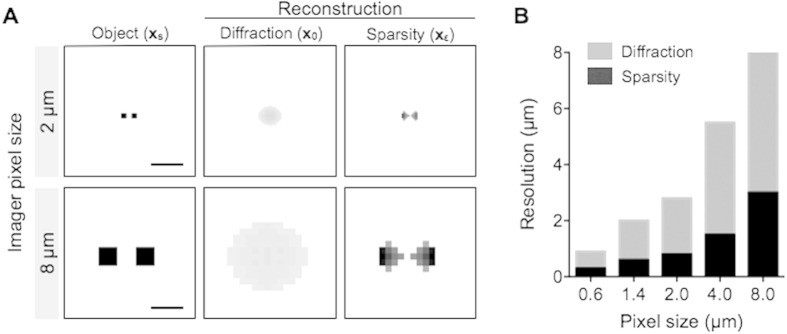Figure 3. Resolution limit.
(A) The true object images (xs, left column) contained two squares whose sizes and inter-distance were smaller than the imager pixel sizes (top row, 2 μm; bottom row 8 μm). Diffraction-based reconstruction (x0, middle column) could not resolve the original pattern. Applying the sparsity-algorithm to x0, two separate squares could be resolved (xε, right column). Scale bar, 2 μm (top) and 8 μm (bottom). (B) Comparison of the spatial resolution with and without sparsity-based reconstruction. The pixel size was varied from 0.6 to 8 μm. Note that the sparsity-based algorithm achieves sub-pixel spatial resolution. The following simulation conditions were used: light wavelength, 405 nm; the distance between objects and the detection, 0.5 mm.

